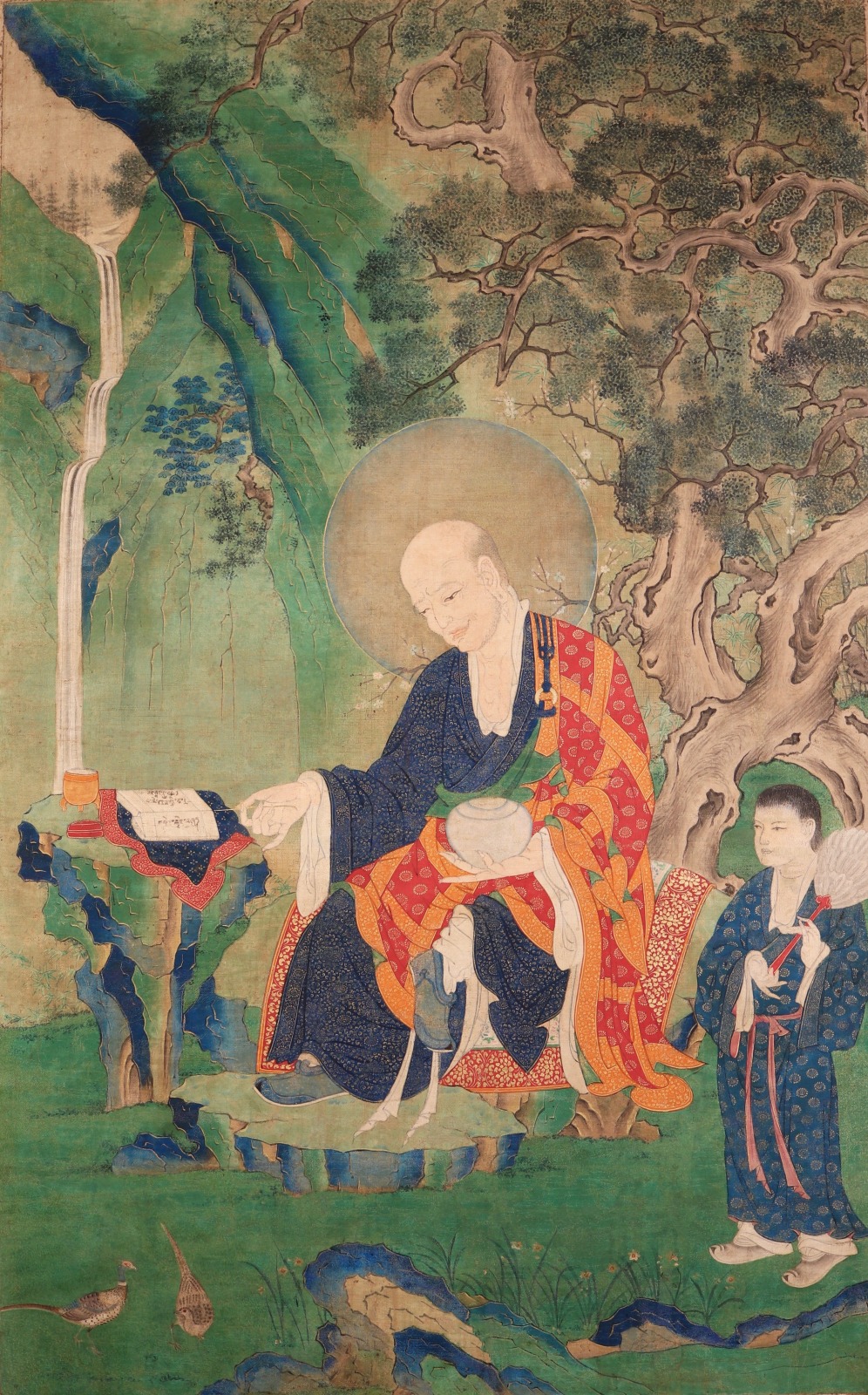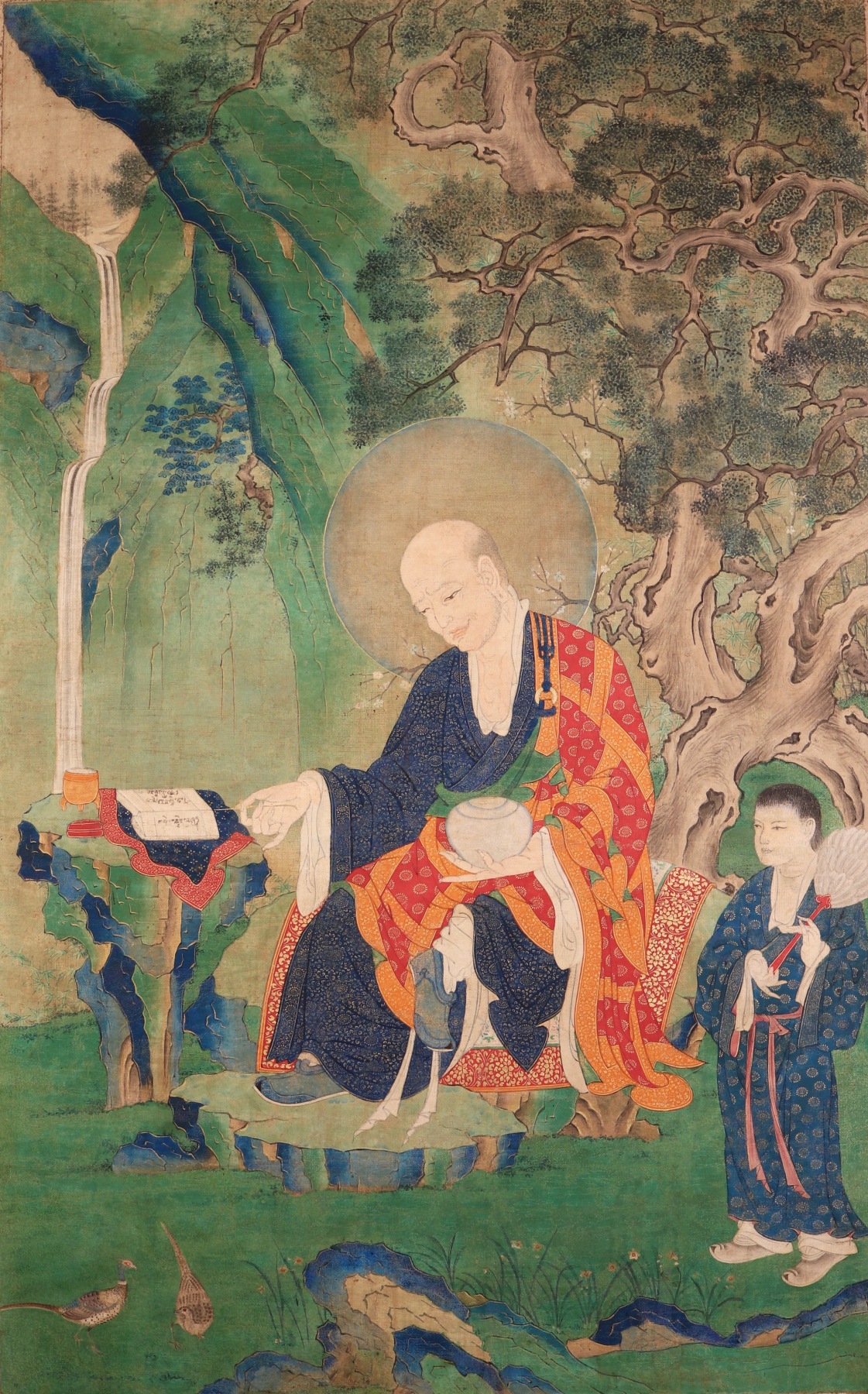
Provenance:
Collection of Dr. Hans Werner Riedel and Dr. Ralf Dieter Loher-Riedel, Munich
Arhats, or “worthy ones,” were the earliest followers of the historical Buddha and the first to attain the Buddhist goal of enlightenment. Upon death, the Arhat entered nirvana and avoided the cycle of samsara (the cycle of death and rebirth that traps unenlightened beings). The Sixteen Great Arhats are generally painted as a set. The full group would include the buddha Shakyamuni, the Sixteen Arhats, the attendant Dharmatala, the patron Hvashang and the Four Guardians of the Directions: Vaishravana, Virupaksha, Dritarashtra, and Virudhaka.
The present example depicts the Arhat Pindola, who, according to the earliest Indian Buddhist sutras, was one of four Arhats asked by the Buddha to remain in the world to propagate Buddhist law. Born into a family of royal chaplains, Pindola Bharadvaja became a monk in order to bring true meaning into his life. Pindola is often depicted, as in the present example, with a scripture and alms bowl, symbolizing his aid and protection over the suffering in the lower realms. He is said to live with 1,000 Arhats on the eastern continent (Purvavideha) in a mountain cave.
Depictions of Arhats, the enlightened Indian disciples of Shakyamuni Buddha regarded as Elders of the Buddhist faith, have been a popular theme in Chinese painting and sculpture since the ninth or tenth century. While the elegant composition of this painting interprets classical themes of landscape, mythical animals and attendant figures, it is Yongle period works that establish the direct stylistic source of the painting. The color and contour of the landscape is ultimately derived from the classical blue-green style of the Tang period (618-907), which was revived by early Yuan-period (1279-1368) artists and then embraced by the Yongle court.
For related paintings from the Yongle period see James C. Y. Watt and Denise Patry Leidy, Defining Yongle: Imperial Art in Early Fifteenth-Century China, The Metropolitan Museum of Art, New York, 2005, pp. 91-99; also compare Robert N. Linrothe, Paradise and Plumage: Chinese Connections in Tibetan Arhat Paintings, Rubin Museum of Art exhibition catalogue, New York, 2004, no. 13.

